Win-A-Lot
Win-A-Lot card game by Pepys, first issued in 1951.

Win-A-Lot by Pepys was issued first in 1951 as a “Double Feature” game with toy currency, share certificates, an indicator board and playing cards. The box was unchanged for the second edition as were the cards. See the Box►
The share certificates were the same in both editions but in the second (also dated 1951) the 5 share certificates had a white background figure which made them more easily distinguished. The money changed colour from one edition to the other. The playing pieces were the same in both editions viz metal money tokens and little domed counters, also metal, for use on the indicator board.
There was also a luxuy boxed edition of Win-A-Lot►
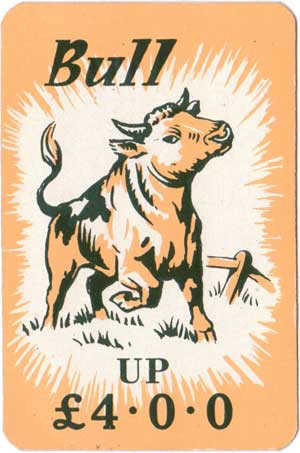
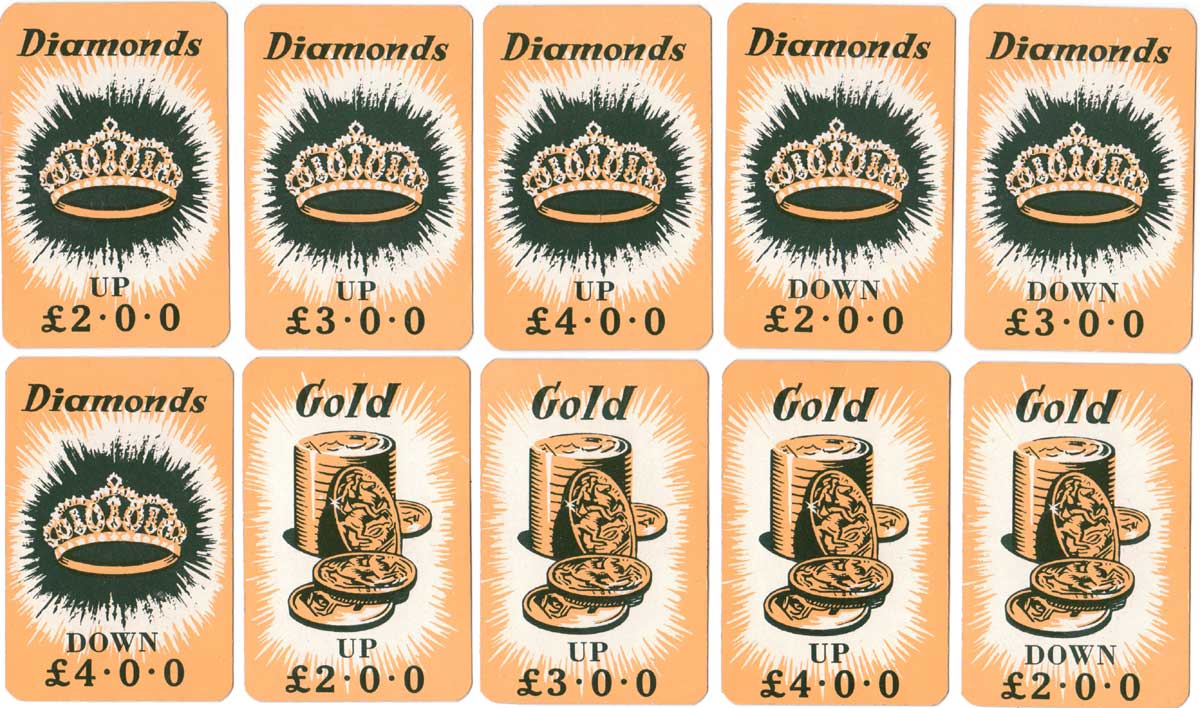
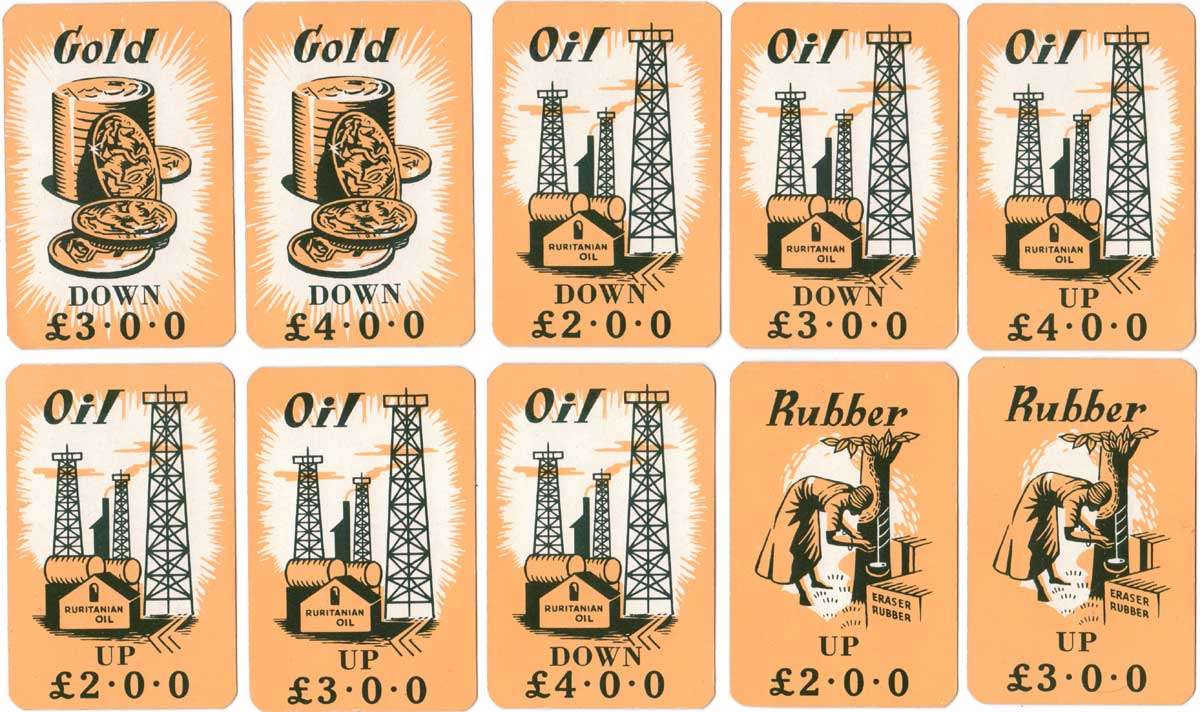

Above: the 26 playing cards consisting of Ruritanian Oil Co., Tiara Diamonds, Sovereign Gold, Eraser Rubber, Bull and Bear cards.
The Share Certificates
Four sets of share warrants amounting to 28 shares in each of 4 companies. A banker is appointed who buys and sells shares between players. See the Rules►
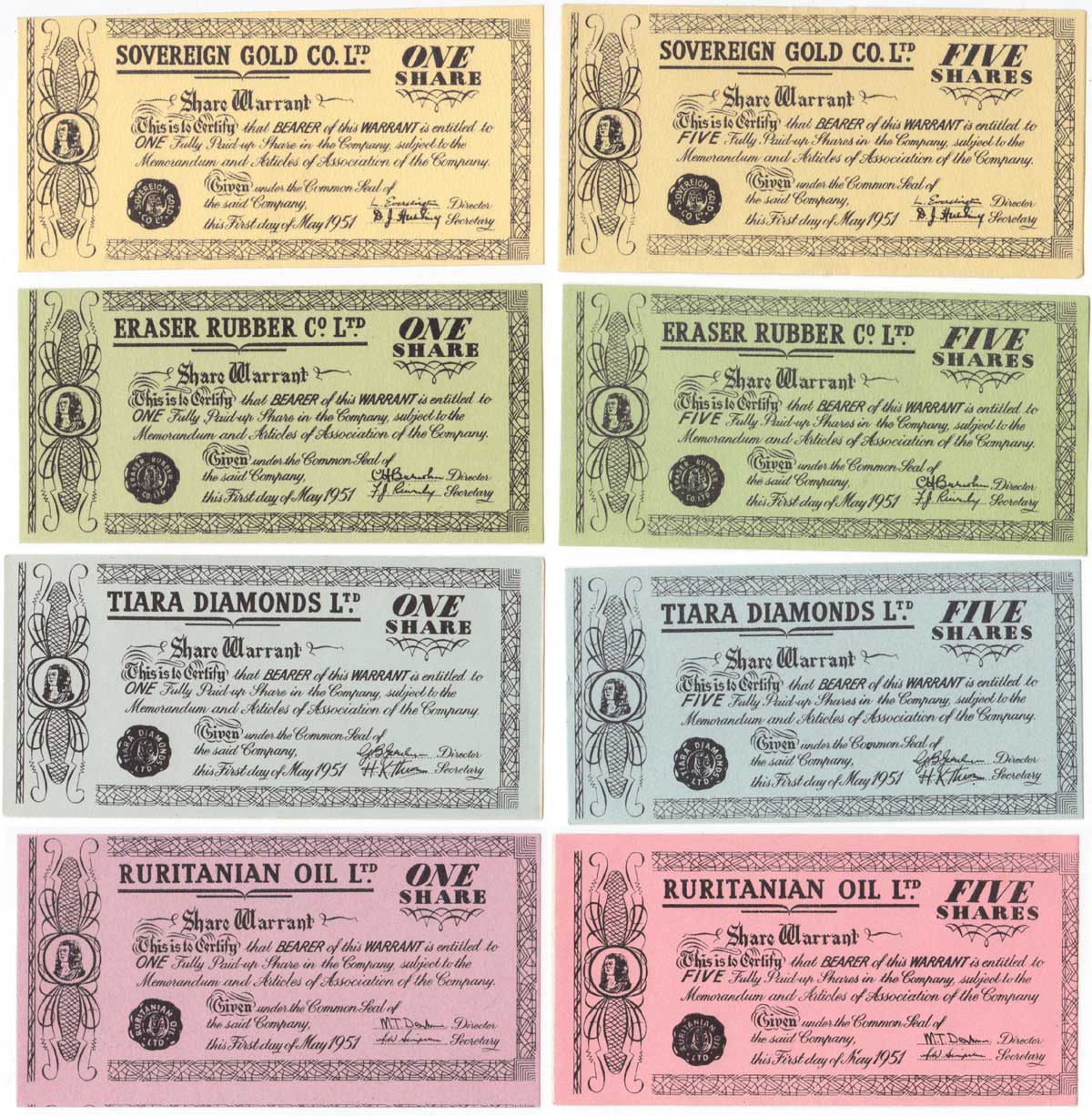
The Indicator Boards
One of the players is appointed scorer and is in charge of the Indicator Board. Counters are used on the Indicator Board to record share values and rounds played, taking into account Bull or Bear cards, etc. In the second edition of Win-A-Lot the Indicator board was twice as long and folded in half to fit the box.
1st Edition
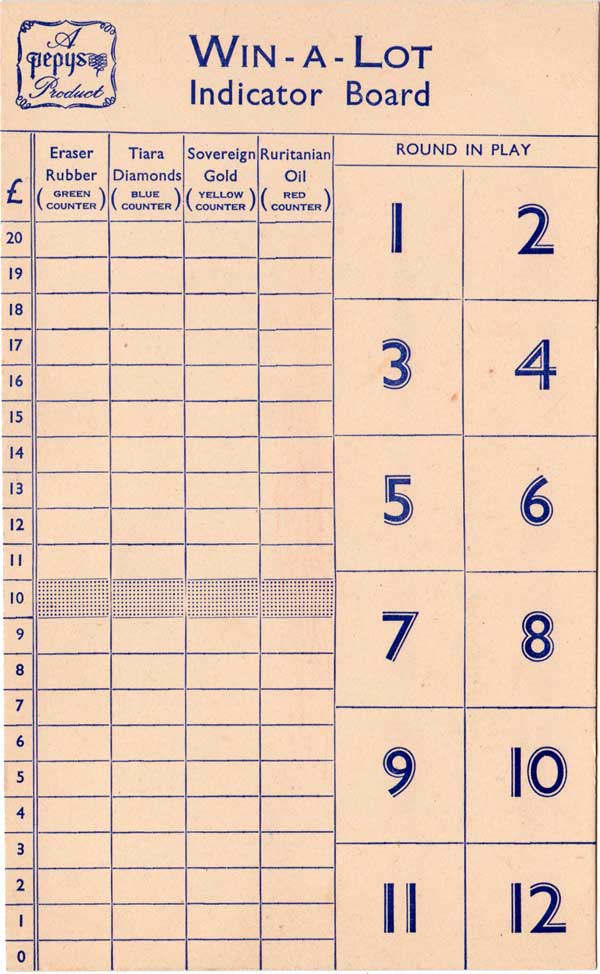
2nd Edition
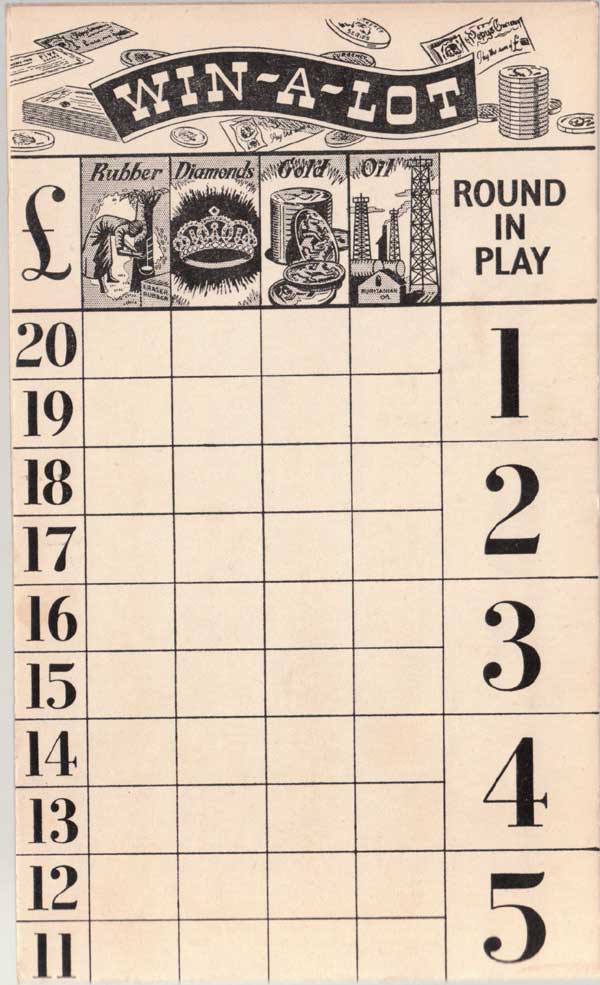
Pepys Currency
The Currency in the game consists of coins representing £1 and notes of £5, £10, £20 and £50. The objective is, by buying and selling shares, to be the player with most money at the end of the game.
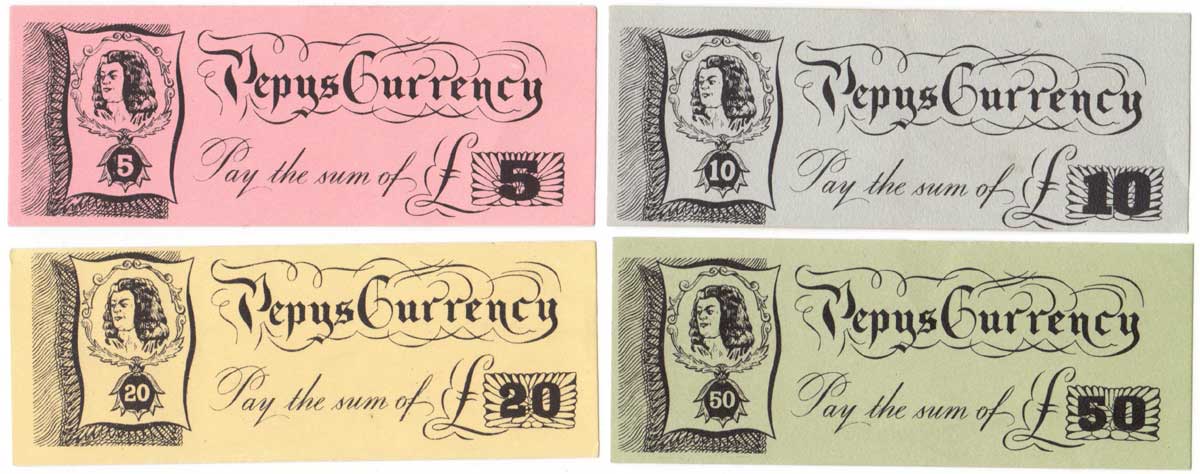
Later Editions
In the second edition (also dated 1951) the share certificates had a white background figure making them more easily distinguished. The money changed colour from one edition to the other.
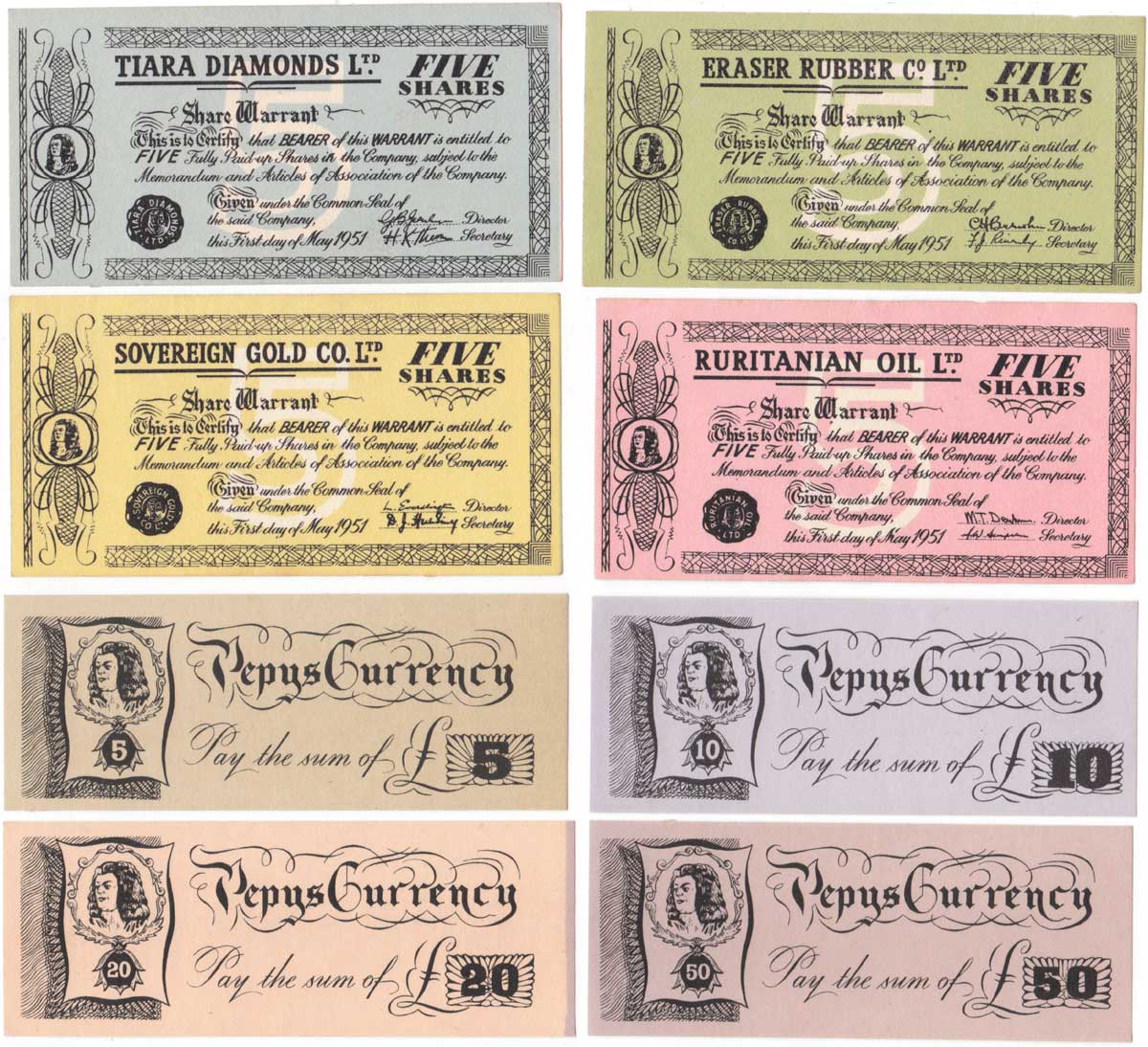
Above: various editions of Win-A-Lot card game by Pepys, first issued in 1951. 26 cards + toy currency + share certificates + indicator board + rules in box.
In 1957 Win-A-Lot was re-published as Stocks & Shares►

By Rex Pitts (1940-2021)
Member since January 30, 2009
Rex's main interest was in card games, because, he said, they were cheap and easy to get hold of in his early days of collecting. He is well known for his extensive knowledge of Pepys games and his book is on the bookshelves of many.
His other interest was non-standard playing cards. He also had collections of sheet music, music CDs, models of London buses, London Transport timetables and maps and other objects that intrigued him.
Rex had a chequered career at school. He was expelled twice, on one occasion for smoking! Despite this he trained as a radio engineer and worked for the BBC in the World Service.
Later he moved into sales and worked for a firm that made all kinds of packaging, a job he enjoyed until his retirement. He became an expert on boxes and would always investigate those that held his cards. He could always recognize a box made for Pepys, which were the same as those of Alf Cooke’s Universal Playing Card Company, who printed the card games. This interest changed into an ability to make and mend boxes, which he did with great dexterity. He loved this kind of handicraft work.
His dexterity of hand and eye soon led to his making card games of his own design. He spent hours and hours carefully cutting them out and colouring them by hand.
Related Articles

Quaterne
A Victorian quartet-style children’s card game by Goodall & Son.

The Molassine Company and its link to Whist and Bridge
A savvy marketing strategy blending Victorian decorative design with Edwardian practicality.

Waddington’s faux books
Waddington’s faux book set containing four packs of playing cards and bridge markers.

Double Dummy Bridge
In the early 20th century several firms began to promote whist or bridge as a game for two.

Ogdens Beauties & Military cigarette cards
Cigarette cards featuring beauties and military uniforms with playing-card insets.

Boddingtons Bitter playing cards
Cool-looking courts advertising Boddingtons Bitter, originally brewed in Manchester.

OXO Faces of the Millennium Dinner
Twentieth-century personalities promoting a millennium dinner at the Oxo Tower in London.

Kids Fun Box playing cards
Colourful cards for children with four non-standard suits connected with the natural world.

Tangle Foot Ale
Badger Brewery Tangle Foot strong ale advertising pack.

Scientific Whist
“Scientific Whist” : standard cards with instructions for play on the faces by Chas Goodall & Son, 1...

Agent Provocateur
Branded lingerie collection in a pack of pin-up playing cards.

Nimbus playing cards
Mike Steer’s weather-themed pack with suits in four colours and backs for cardistry.

Agatha Christie and Playing Cards revisited
Agatha Christie uses card-play as a primary focus of a story, and as a way of creating plots and mot...

The Decadent Deck
Studies in the eroticism of the female body by Inge Clayton.

Historic Shakespeare
“Historic Shakespeare” playing cards featuring Shakespearean characters by Chas Goodall & Son.

Copechat Paramount Sorting System
Preserving the past: a specimen deck showcasing edge-notched cards and their ingenious sorting syste...
Most Popular
Our top articles from the past 28 days

